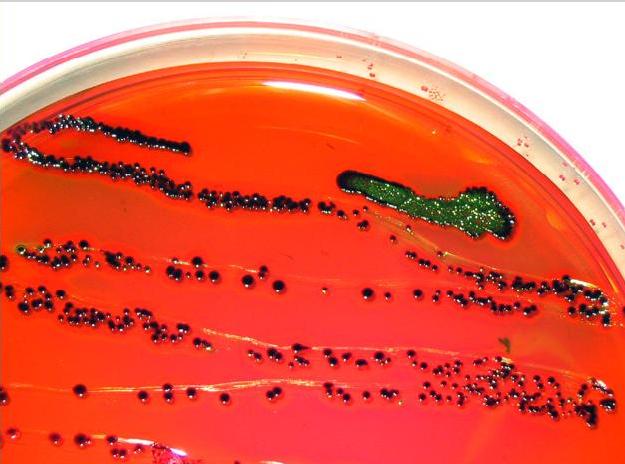eosin methylene blue on:
[Wikipedia]
[Google]
[Amazon]
 Eosin methylene blue (EMB, also known as "Levine's formulation") is a selective stain for
Eosin methylene blue (EMB, also known as "Levine's formulation") is a selective stain for
Uses of EMB AgarHistory of EMB AgarAcumedia - EMB AgarThe Scientist - EMB ExplanationMicrobugz - EMB Agar
{{DEFAULTSORT:Eosin Methylene Blue Biochemistry detection reactions Microbiological media ingredients Staining Microbiological media
Gram-negative bacteria
Gram-negative bacteria are bacteria that do not retain the crystal violet stain used in the Gram staining method of bacterial differentiation. They are characterized by their cell envelopes, which are composed of a thin peptidoglycan cell wall ...
. EMB contains dyes that are toxic to Gram-positive bacteria. EMB is the selective and differential medium for coliforms
Coliform bacteria are defined as either motile or non-motile Gram-negative non-Endospore, spore forming Bacillus (shape), Bacilli that possess Beta-galactosidase, β-galactosidase to produce acids and gases under their optimal growth temperature o ...
. It is a blend of two stains, eosin
Eosin is the name of several fluorescent acidic compounds which bind to and form salts with basic, or eosinophilic, compounds like proteins containing amino acid residues such as arginine and lysine, and stains them dark red or pink as a resul ...
and methylene blue in the ratio of 6:1. EMB is a differential microbiological medium, which slightly inhibits the growth of Gram-positive bacteria and provides a color indicator distinguishing between organisms that ferment lactose (e.g., ''E. coli'') and those that do not (e.g., ''Salmonella'', ''Shigella''). Organisms that ferment lactose display "nucleated colonies"—colonies with dark centers.
This medium is important in medical laboratories by distinguishing pathogenic microbes in a short period of time.
*Rapid lactose fermentation produces acids, which lower the pH. This encourages dye absorption by the colonies, which are now colored purple-black.
*Lactose non-fermenters may increase the pH by deamination of proteins. This ensures that the dye is not absorbed. The colonies will be colorless.
On EMB if '' E. coli'' is grown it will give a distinctive metallic green sheen (due to the metachromatic properties of the dyes, ''E. coli'' movement using flagella, and strong acid end-products of fermentation). Some species of ''Citrobacter'' and ''Enterobacter'' will also react this way to EMB.
This medium has been specifically designed to discourage the growth of Gram-positive bacteria.
EMB contains the following ingredients: peptone, lactose, dipotassium phosphate
Dipotassium phosphate (K2HPO4) (also dipotassium hydrogen orthophosphate; potassium phosphate dibasic) is the inorganic compound with the formula K2HPO4.(H2O)x (x = 0, 3, 6). Together with monopotassium phosphate (KH2PO4.(H2O)x), it is often used ...
, eosin Y
Eosin Y, also called C.I. 45380 or C.I. Acid Red 87, is a member of the triarylmethane dyes. It is produced from fluorescein by bromination.
Use
Eosin Y is commonly used as the red dye in red inks.
It is commonly used in histology, most nota ...
(dye), methylene blue (dye), and agar.
There are also EMB agars that do not contain lactose.
References
External links
Uses of EMB Agar
{{DEFAULTSORT:Eosin Methylene Blue Biochemistry detection reactions Microbiological media ingredients Staining Microbiological media